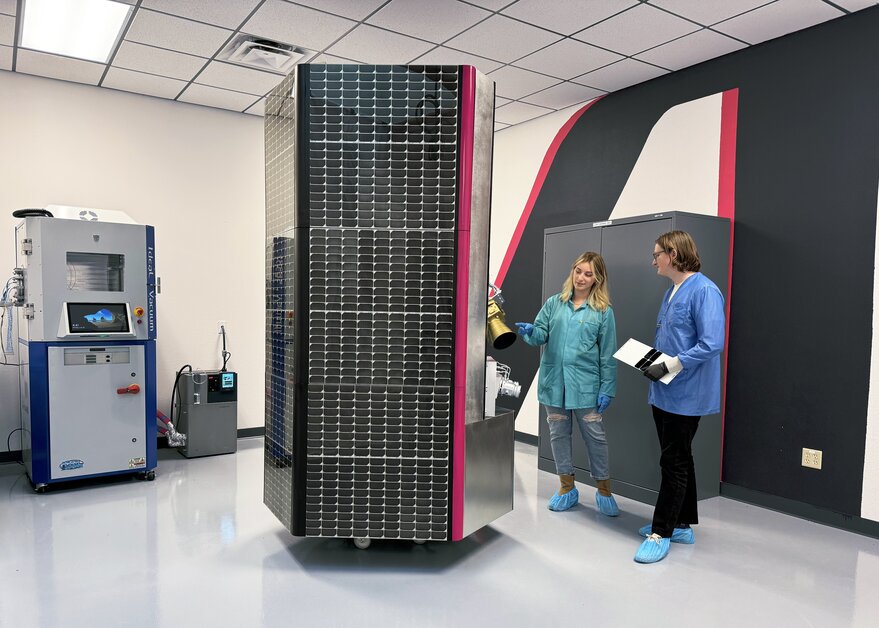SAN FRANCISCO – Albedo announced plans June 12 to send its first phone-booth-size satellite into very low Earth orbit early next year.
Clarity, the Denver-based startup’s first satellite designed to acquire 10-centimeter visible and two-meter thermal infrared imagery, is slated to launch into sun synchronous orbit no earlier than February 2025 on SpaceX Transporter-13, a Falcon 9 rideshare.
“It’s an operational system,” Albedo CEO Topher Haddad told SpaceNews. “We’ve done a bunch of risk-reduction testing and prototyping on the ground and we’ve done aircraft demos.”
Reserving Capacity
Albedo, founded in late 2020, seeks to carve out a niche in the Earth-imagery market by offering extremely high resolution visible and thermal imagery from the same platform. Funding for satellite integration and testing comes from the $35 million Series A-1 funding round Albedo announced in January.
Customers have reserved much of Clarity’s capacity for its first two years of operation.
“They pay a cash deposit and sign up for however many images they want,” Haddad said. Those collections are guaranteed because Albedo has already reserved capacity to fulfill contracts with U.S. government contracts, he added.
The National Reconnaissance Office announced agreements in December with Albedo and four other electro-optical imagery providers. Albedo also won a contract last year to provide the National Air and Space Intelligence Center with thermal infrared imagery for nighttime applications.
Diverse Uses
A June 12 blog post names some of Albedo’s initial customers: software company AiDash, Japan Space Imaging, German gas transmission grid operator Open Grid Europe, Canadian geospatial data provider PhotoSat, training data company ScaleAI and Earth observation data provider SkyFi. An unnamed hedge fund has claimed additional imagery.
“That’s only a subset of customers who have signed,” Haddad said. “Even that subset shows the breadth of use cases.”
Constellation
Albedo’s initial plans call for a 24-satellite constellation. Demand, though, will determine how many satellites Albedo ultimately launches.
“Once we get to six to 12 satellites and we’re figuring out the growth path, we’ll determine if we allocate more capital to pumping out more satellites or to investing in different software products or other types of Earth-observation modalities that benefit from flying twice as close to the Earth on an agile, stable platform,” Haddad said.
Building that stable platform was a challenge.
“The hardest part of what we’re doing is the pointing problem,” Haddad said. “Being able to take pictures of a lot of different targets in a single orbit pass and getting rid of all the momentum and torque from the atmosphere is already pretty hard with a high resolution imaging satellite. It’s made harder by taking that satellite and flying it super low.”
